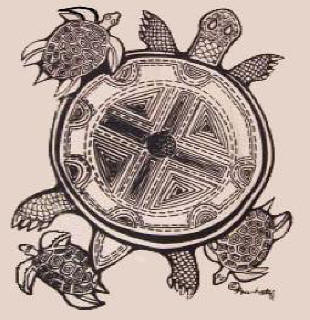 |
LITR 4326
Early American Literature Research Posts 2016 (research post assignment) Research Post 2 |
 |
Shanna Farmer
Sacagawea: The One Who Brought Peace
Since
we have read so much about the influence white settlers had upon the Native
Americans and vice versa, I wanted to focus on a Native American woman for my
second research post. The two most well-known Native American women are
Sacagawea and Pocahontas, but after a little research I feel like the quiet
impact Sacagawea had on American history was perhaps arguably greater than that
of Pocahontas. Sacagawea’s presence and knowledge of the land being explored by
Lewis and Clark proved not only to be invaluable, but her and her infant’s
presence might have been the difference between success and death of the men
charged with exploring America to the western seaboard.
Sacagawea was born around 1788 to a Shoshone chief in Idaho and at the age of 12
was captured by Hidatsa Indians (biography.com). She was then traded to a
French-Canadian trapper named Toussaint Charbonneau. In November 1804, Lewis and
Clark entered the area she and her husband lived in and decided to winter there
after being sent by President Thomas Jefferson to explore land bought by the US
in the Louisiana Purchase (history.com).
After
her husband was hired as a translator (he spoke French and Hidatsa) it was
determined that they would accompany the expedition west since she spoke
Shoshone and Hidatsa. Since one of the members of the expedition, Francois
Labiche, spoke French as well, they determined that they would have a
translation team when they came upon the Shoshone Indians. It was before they
set off again in the spring that Sacagawea gave birth to a son, it was even
noted in Lewis’s journal, “about five o’clock this evening one of the wives of
Charbono was delivered of a fine boy.” (nps.gov)
Two
months after the birth, Sacagawea and her husband set off with Lewis and Clark
(nps.gov). It was she that guided the men through the plains, but perhaps her
greatest asset was simply her and her infant son’s presence. Indians knew that a
woman and infant did not travel in a war party; hence they were seen as a
non-threat, which was important to a nearly all-white group of men traveling
through native lands. On August 12,
1805, they finally met Shoshone Indians and five days later met the chief who
happened to be Sacagawea’s brother (pbs.org). It was with him she was able to
trade for horses that were much needed for their trek over the mountains.
I
think the impact she had made and the amount of respect she was given within
their group was evident when she was allowed to vote on where the group was to
camp for the winter. Her vote was counted equally (pbs.org). But at the end of
the journey Sacagawea received nothing, and Charbonneau was given $500.33 and
320 acres of land. I suppose in the 1800s, since it was still uncommon for women
to own property, that this might been seen as a gift to both her and her
husband. However, it is easy to see how without her and her baby’s presence that
the party would have faced aggression from the Indians and perhaps would have
been lost. Her skills in language and land and her courage were an asset to
Lewis and Clark; the one thing that made the biggest difference was her gender,
which was something only she could have provided the expedition.
Works
Cited
"Sacagawea." Web. 9 May 2016.
<http://www.biography.com/people/sacagawea-9468731>.
"Sacagwea." Web. 9 May 2016.
<http://www.history.com/topics/native-american-history/sacagawea>.
"Sacagawea." Web. 9 May 2016.
<https://www.nps.gov/lecl/learn/historyculture/sacagawea.htm>.
"Sacagawea." Lewis and Clark. Inside the Corps. Web. 9 May 2016.
<http://www.pbs.org/lewisandclark/inside/saca.html>.
|
|
|
|


